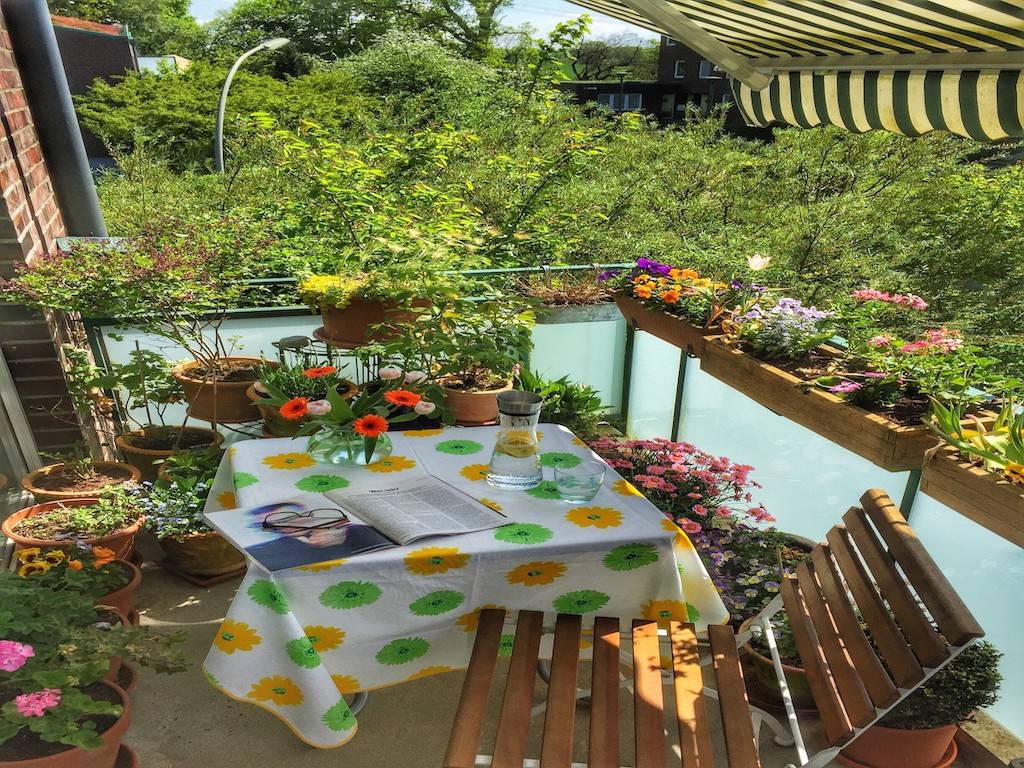
Balcony gardening is exactly what it sounds like: a balcony garden. Because of the scarcity of space in metropolitan areas, container gardening is a popular technique.
Growing plants and veggies, or anything else that suits the apartment dweller's inventiveness, may easily convert a modest flat into something spectacular. Vertically hanging baskets, pots, jars, and planters on a balcony wall are just a few of the various options for creating a balcony garden.
Plants To Grow In The Balcony
Beginners should begin with the easy-to-grow plants listed below, which require less attention than other plants:
Celery
Lettuce
Beans
Broccoli
Radish
Cucumbers
You can opt for flowers as well:
Begonias
Pansy
Petunia
Jasmine
Rose
Guide To Getting Started
1. Recognise the natural circumstances of your balcony garden:
If you don't know whether the conditions are suitable to their survival, you won't gain much advantage from buying a range of colourful plants to adorn your balcony garden. Plants, for example, require certain weather conditions to thrive. Some plants thrive on sunny balconies, while others prefer to be in the shadow.
2. Wind and Sunlight:
Some plants may not require the sun to thrive, yet others perform better in low light. Furthermore, certain plants prefer indirect sunlight, while others demand shade. Some plants can tolerate heat, while others cannot. Some plants are killed by the wind, while others dance in the breeze. You'll have to water your plants frequently if your balcony is always windy. Calculate the number of hours of sunlight and the amount of wind that your balcony receives.
3. Watering the Plants:
During the summer, most plants require watering twice: first thing in the morning and last thing at night.
4. Pick plants that require little upkeep:
Choose the best plant for your balcony based on its location and the weather. Choose plants that are simple to maintain and don't require a lot of effort. On your balcony, you may grow aloe vera, snake plants, and money plants. Plants like this may last several days without water. Consider planting low-maintenance flowers like marigolds and begonias, which look great on a balcony and require little care.
5. Choose the right plant types for your balcony garden:
The correct plant is picked based on the location of the balcony and the weather.
6. Plants for low balconies:
Because sunlight is limited on a lower level balcony, shade plants are excellent. Pepperoni, succulents, and African violets, in addition to ferns and orchids, can be used.
7. Plants for windy balconies:
A balcony plant should be able to endure the balcony's high winds. As a result, stay away from plants with thin, easily snapped stems. The ideal plant species for balconies like these are succulents, crotons, and cactus.
8. A midday sun-drenched balcony garden:
Plants that can withstand direct sunshine thrive on these balconies. Bougainvillea and geranium, for example, thrive on sunny balconies.
9. Morning sun is required by a variety of plants:
The sun is much gentler in the early morning hours than it is in the afternoon. As a result, blooming plants that require partial shade will flourish in these areas. Peace lilies, Anthuriums, and Begonias thrive in these settings.
10. Balconies that are enclosed:
The movement of air on covered balconies might have an impact on plant development. Because plants flourish in these circumstances, they may be utilised to cleanse the air on balconies. Spider plants, aloe vera, and azaleas can be found in enclosed balcony gardens. It's a good idea to get professional guidance before selecting plants for your balcony.
11. Fertilizers:
You must also give enough water, sunlight, and nutrients for your balcony garden. Fertilizers are utilized for this specific purpose; you may either buy container-specific fertilizers or use compost. The latter is natural and safe for the environment. Mix some fertilizer into the soil every two weeks to keep your plants healthy. Fertilizer must be applied on a regular basis to potted plants since they quickly deplete and watering dries them out.
1. A soil test measures the pH level and micronutrient content of your garden soil. If you don't have access to a garden center, you may test your soil at home.
2. Do you know when it's time to transplant your plants? On a bright day with a breeze, planting in the late afternoon is ideal. On a chilly, gloomy day, the morning is the best time to go out. If it's a hot, humid day, the best time to go is in the evening.
3. While many gardeners appreciate the feel of dirt on their hands, using gloves to protect them from calloused hands, insects, and potentially numerous soil-borne illnesses is a good idea.
4. When pulling weeds, make sure the earth is wet. Weeding is easier when the soil is moist because weeds break away easily from damp soil.
5. Check to see whether your balcony is too hefty. Find out whether there are any limitations on the weight of pots and other laws in the area where you'll be staying. Check to see if planter suspensions on railings are allowed.
6. Shade plants are great for balconies with little sunshine. Some of the plants you can grow are ferns, orchids, and peperomia.
7. Rather than big pots that take up valuable balcony space, use small containers. The books are strewn on the ground, on a table, or on a shelf.
8. Clean the floor as much as you can, especially if you're short on space.
9. Plastic pots do not enable water to drain properly, making them worse than terracotta pots for drainage. Drainage holes can help avoid over-watering and root rot. Place saucers beneath the pots to prevent water from seeping down the drain holes.
10. You may utilize old containers, jars, even rain boots to produce plants and veggies.
















